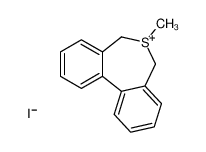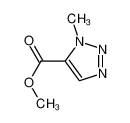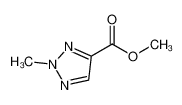| Product name | iodomethane |
|---|
| Product number | - |
|---|---|
| Other names | methyl iodide |
| Identified uses | For industry use only. Methyl iodide is used as an intermediate in the manufacture of some pharmaceuticals and pesticides. It is also used in methylation processes and in the field of microscopy. Proposed uses of methyl iodide are as a fire extinguisher and as an insecticidal fumigant. |
|---|---|
| Uses advised against | no data available |
| Company | MOLBASE (Shanghai) Biotechnology Co., Ltd. |
|---|---|
| Address | Floor 4 & 5, Building 12, No. 1001 North Qinzhou Road, Xuhui District, Shanghai, China |
| Telephone | +86(21)64956998 |
| Fax | +86(21)54365166 |
| Emergency phone number | +86-400-6021-666 |
|---|---|
| Service hours | Monday to Friday, 9am-5pm (Standard time zone: UTC/GMT +8 hours). |
Acute toxicity - Oral, Category 3
Acute toxicity - Dermal, Category 4
Skin irritation, Category 2
Acute toxicity - Inhalation, Category 3
Specific target organ toxicity – single exposure, Category 3
Carcinogenicity, Category 2
2.2 GHS label elements, including precautionary statements| Pictogram(s) |   |
|---|---|
| Signal word | Danger |
| Hazard statement(s) | H301 Toxic if swallowed H312 Harmful in contact with skin H315 Causes skin irritation H331 Toxic if inhaled H335 May cause respiratory irritation H351 Suspected of causing cancer |
| Precautionary statement(s) | |
| Prevention | P264 Wash ... thoroughly after handling. P270 Do not eat, drink or smoke when using this product. P280 Wear protective gloves/protective clothing/eye protection/face protection. P261 Avoid breathing dust/fume/gas/mist/vapours/spray. P271 Use only outdoors or in a well-ventilated area. P201 Obtain special instructions before use. P202 Do not handle until all safety precautions have been read and understood. |
| Response | P301+P310 IF SWALLOWED: Immediately call a POISON CENTER/doctor/… P321 Specific treatment (see ... on this label). P330 Rinse mouth. P302+P352 IF ON SKIN: Wash with plenty of water/... P312 Call a POISON CENTER/doctor/…if you feel unwell. P362+P364 Take off contaminated clothing and wash it before reuse. P332+P313 If skin irritation occurs: Get medical advice/attention. P304+P340 IF INHALED: Remove person to fresh air and keep comfortable for breathing. P311 Call a POISON CENTER/doctor/… P308+P313 IF exposed or concerned: Get medical advice/ attention. |
| Storage | P405 Store locked up. P403+P233 Store in a well-ventilated place. Keep container tightly closed. |
| Disposal | P501 Dispose of contents/container to ... |
none
3.Composition/information on ingredients 3.1 Substances| Chemical name | Common names and synonyms | CAS number | EC number | Concentration |
|---|---|---|---|---|
| iodomethane | iodomethane | 74-88-4 | none | 100% |
Consult a physician. Show this safety data sheet to the doctor in attendance.
If inhaledFresh air, rest. Refer immediately for medical attention.
In case of skin contactRemove contaminated clothes. Rinse and then wash skin with water and soap. Refer for medical attention .
In case of eye contactFirst rinse with plenty of water for several minutes (remove contact lenses if easily possible), then refer for medical attention.
If swallowedRinse mouth. Do NOT induce vomiting. Give a slurry of activated charcoal in water to drink. Refer immediately for medical attention.
4.2 Most important symptoms/effects, acute and delayedInhalation of vapor causes lung congestion and pulmonary edema. Higher concentrations causes rapid narcosis and death. Contact with liquid irritates eyes and burns skin. (USCG, 1999)
4.3 Indication of immediate medical attention and special treatment needed, if necessaryFlush eyes thoroughly with water and wash contaminated areas of body with soap and water. Treat skin burns as usual.
5.Fire-fighting measures 5.1 Extinguishing media Suitable extinguishing mediaSelf-contained breathing apparatus with a full facepiece operated in pressure-demand or other positive-pressure mode.
5.2 Specific hazards arising from the chemicalSpecial Hazards of Combustion Products: Toxic and irritating gases are generated when exposed to fire or heat. Behavior in Fire: Containers may explode (USCG, 1999)
5.3 Special protective actions for fire-fightersWear self-contained breathing apparatus for firefighting if necessary.
6.Accidental release measures 6.1 Personal precautions, protective equipment and emergency proceduresUse personal protective equipment. Avoid dust formation. Avoid breathing vapours, mist or gas. Ensure adequate ventilation. Evacuate personnel to safe areas. Avoid breathing dust. For personal protection see section 8.
6.2 Environmental precautionsEvacuate danger area! Consult an expert! Personal protection: self-contained breathing apparatus. Collect leaking and spilled liquid in sealable containers as far as possible. Absorb remaining liquid in sand or inert absorbent. Then store and dispose of according to local regulations.
6.3 Methods and materials for containment and cleaning up1. VENTILATE AREA OF SPILL OR LEAK. 2. COLLECT FOR RECLAMATION OR ABSORB IN VERMICULITE, DRY SAND, EARTH, OR SIMILAR MATERIAL.
7.Handling and storage 7.1 Precautions for safe handlingAvoid contact with skin and eyes. Avoid formation of dust and aerosols. Avoid exposure - obtain special instructions before use.Provide appropriate exhaust ventilation at places where dust is formed. For precautions see section 2.2.
7.2 Conditions for safe storage, including any incompatibilitiesProvision to contain effluent from fire extinguishing. Separated from strong oxidants and food and feedstuffs. Well closed. Ventilation along the floor. Store in an area without drain or sewer access.Keep containers closed and store in a dark place.
8.Exposure controls/personal protection 8.1 Control parameters Occupational Exposure limit valuesNIOSH considers methyl iodide to be a potential occupational carcinogen.
NIOSH usually recommends that occupational exposures to carcinogens be limited to the lowest feasible concentration.
Recommended Exposure Limit: 10 Hr Time-Weighted Avg: 2 ppm (10 mg/cu m), skin.
Biological limit valuesno data available
8.2 Appropriate engineering controlsHandle in accordance with good industrial hygiene and safety practice. Wash hands before breaks and at the end of workday.
8.3 Individual protection measures, such as personal protective equipment (PPE) Eye/face protectionSafety glasses with side-shields conforming to EN166. Use equipment for eye protection tested and approved under appropriate government standards such as NIOSH (US) or EN 166(EU).
Skin protectionWear impervious clothing. The type of protective equipment must be selected according to the concentration and amount of the dangerous substance at the specific workplace. Handle with gloves. Gloves must be inspected prior to use. Use proper glove removal technique(without touching glove's outer surface) to avoid skin contact with this product. Dispose of contaminated gloves after use in accordance with applicable laws and good laboratory practices. Wash and dry hands. The selected protective gloves have to satisfy the specifications of EU Directive 89/686/EEC and the standard EN 374 derived from it.
Respiratory protectionWear dust mask when handling large quantities.
Thermal hazardsno data available
9.Physical and chemical properties| Physical state | Clear to pink liquid |
|---|---|
| Colour | Colorless, transparent liquid (turns brown on exposure to light) |
| Odour | Pungent, ether-like odor. |
| Melting point/ freezing point | 252°C(dec.)(lit.) |
| Boiling point or initial boiling point and boiling range | 41-43°C(lit.) |
| Flammability | Noncombustible LiquidNot combustible. Gives off irritating or toxic fumes (or gases) in a fire. |
| Lower and upper explosion limit / flammability limit | no data available |
| Flash point | -18°C |
| Auto-ignition temperature | 355°C |
| Decomposition temperature | no data available |
| pH | no data available |
| Kinematic viscosity | 0.606 cP at 0°C, 0.424 cP at 40°C. |
| Solubility | In water:14 g/L (20 ºC) |
| Partition coefficient n-octanol/water (log value) | log Kow= 1.51 |
| Vapour pressure | 24.09 psi ( 55 °C) |
| Density and/or relative density | 2.28g/mLat 25°C(lit.) |
| Relative vapour density | 4.89 (vs air) |
| Particle characteristics | no data available |
no data available
10.2 Chemical stabilityCOLORLESS LIQUID THAT TURNS YELLOW, RED OR BROWN WHEN EXPOSED TO LIGHT & MOISTURE.
10.3 Possibility of hazardous reactionsIodomethane is not flammable.The vapour is heavier than air and may accumulate in lowered spaces causing a deficiency of oxygen.Halogenated aliphatic compounds, such as METHYL IODIDE, are moderately or very reactive. Halogenated organics generally become less reactive as more of their hydrogen atoms are replaced with halogen atoms. Low molecular weight haloalkanes are highly flammable and can react with some metals to form dangerous products. Materials in this group are incompatible with strong oxidizing and reducing agents. Also, they are incompatible with many amines, alkylphosphines, nitrides, azo/diazo compounds, alkali metals (sodium), and epoxides.
10.4 Conditions to avoidno data available
10.5 Incompatible materialsStrong oxidizers [Note: Decomposes at 518 degrees F].
10.6 Hazardous decomposition productsIODIDE & HYDROGEN IODIDE MAY BE RELEASED WHEN METHYL IODIDE UNDERGOES THERMAL DECOMPOSITION (270 DEG C).
11.Toxicological information Acute toxicity- Oral: no data available
- Inhalation: LCLO Mouse inhalation 78,693 ppm/10 min.
- Dermal: no data available
no data available
Serious eye damage/irritationno data available
Respiratory or skin sensitizationno data available
Germ cell mutagenicityno data available
CarcinogenicityCancer Classification: Not Likely to be Carcinogenic to Humans at Doses that Do Not Alter Rat Thyroid Hormone Homeostasis
Reproductive toxicityNo information is available on the reproductive or developmental effects of methyl iodide in humans or animals.
STOT-single exposureno data available
STOT-repeated exposureno data available
Aspiration hazardno data available
12.Ecological information 12.1 Toxicity- Toxicity to fish: no data available
- Toxicity to daphnia and other aquatic invertebrates: no data available
- Toxicity to algae: no data available
- Toxicity to microorganisms: no data available
no data available
12.3 Bioaccumulative potentialAn estimated BCF of 2.9 was calculated for methyl iodide(SRC), using a log Kow of 1.51(1,SRC) and a regression-derived equation(2). According to a classification scheme(3), this BCF suggests the potential for bioconcentration in aquatic organisms is low. While methyl iodide has been detected in various fish and shellfish, it is thought that the chemical may have been formed biogenically(4).
12.4 Mobility in soilUsing a structure estimation method based on molecular connectivity indices(1), the Koc for methyl iodide can be estimated to be 14(SRC). According to a classification scheme(2), this estimated Koc value suggests that methyl iodide should have very high mobility in soil. The soil/water distribution coefficient of methyl iodide in various soils were (soil, Kd): Greenfield sandy loam, 0.09; Linne clay loam, 0.15; Carsetas loamy sand, 0.16; and potting mix, 0.55(3).
12.5 Other adverse effectsno data available
13.Disposal considerations 13.1 Disposal methods ProductThe material can be disposed of by removal to a licensed chemical destruction plant or by controlled incineration with flue gas scrubbing. Do not contaminate water, foodstuffs, feed or seed by storage or disposal. Do not discharge to sewer systems.
Contaminated packagingContainers can be triply rinsed (or equivalent) and offered for recycling or reconditioning. Alternatively, the packaging can be punctured to make it unusable for other purposes and then be disposed of in a sanitary landfill. Controlled incineration with flue gas scrubbing is possible for combustible packaging materials.
14.Transport information 14.1 UN Number| ADR/RID: UN2644 | IMDG: UN2644 | IATA: UN2644 |
| ADR/RID: METHYL IODIDE |
| IMDG: METHYL IODIDE |
| IATA: METHYL IODIDE |
| ADR/RID: 6.1 | IMDG: 6.1 | IATA: 6.1 |
| ADR/RID: II | IMDG: II | IATA: II |
| ADR/RID: no | IMDG: no | IATA: no |
no data available
14.7 Transport in bulk according to Annex II of MARPOL 73/78 and the IBC Codeno data available
15.Regulatory information 15.1 Safety, health and environmental regulations specific for the product in question| Chemical name | Common names and synonyms | CAS number | EC number |
|---|---|---|---|
| iodomethane | iodomethane | 74-88-4 | none |
| European Inventory of Existing Commercial Chemical Substances (EINECS) | Listed. | ||
| EC Inventory | Listed. | ||
| United States Toxic Substances Control Act (TSCA) Inventory | Listed. | ||
| China Catalog of Hazardous chemicals 2015 | Listed. | ||
| New Zealand Inventory of Chemicals (NZIoC) | Listed. | ||
| Philippines Inventory of Chemicals and Chemical Substances (PICCS) | Listed. | ||
| Vietnam National Chemical Inventory | Not Listed. | ||
| Chinese Chemical Inventory of Existing Chemical Substances (China IECSC) | Listed. | ||
| Creation Date | Aug 12, 2017 |
|---|---|
| Revision Date | Aug 12, 2017 |
- CAS: Chemical Abstracts Service
- ADR: European Agreement concerning the International Carriage of Dangerous Goods by Road
- RID: Regulation concerning the International Carriage of Dangerous Goods by Rail
- IMDG: International Maritime Dangerous Goods
- IATA: International Air Transportation Association
- TWA: Time Weighted Average
- STEL: Short term exposure limit
- LC50: Lethal Concentration 50%
- LD50: Lethal Dose 50%
- EC50: Effective Concentration 50%
- IPCS - The International Chemical Safety Cards (ICSC), website: http://www.ilo.org/dyn/icsc/showcard.home
- HSDB - Hazardous Substances Data Bank, website: https://toxnet.nlm.nih.gov/newtoxnet/hsdb.htm
- IARC - International Agency for Research on Cancer, website: http://www.iarc.fr/
- eChemPortal - The Global Portal to Information on Chemical Substances by OECD, website: http://www.echemportal.org/echemportal/index?pageID=0&request_locale=en
- CAMEO Chemicals, website: http://cameochemicals.noaa.gov/search/simple
- ChemIDplus, website: http://chem.sis.nlm.nih.gov/chemidplus/chemidlite.jsp
- ERG - Emergency Response Guidebook by U.S. Department of Transportation, website: http://www.phmsa.dot.gov/hazmat/library/erg
- Germany GESTIS-database on hazard substance, website: http://www.dguv.de/ifa/gestis/gestis-stoffdatenbank/index-2.jsp
- ECHA - European Chemicals Agency, website: https://echa.europa.eu/




























